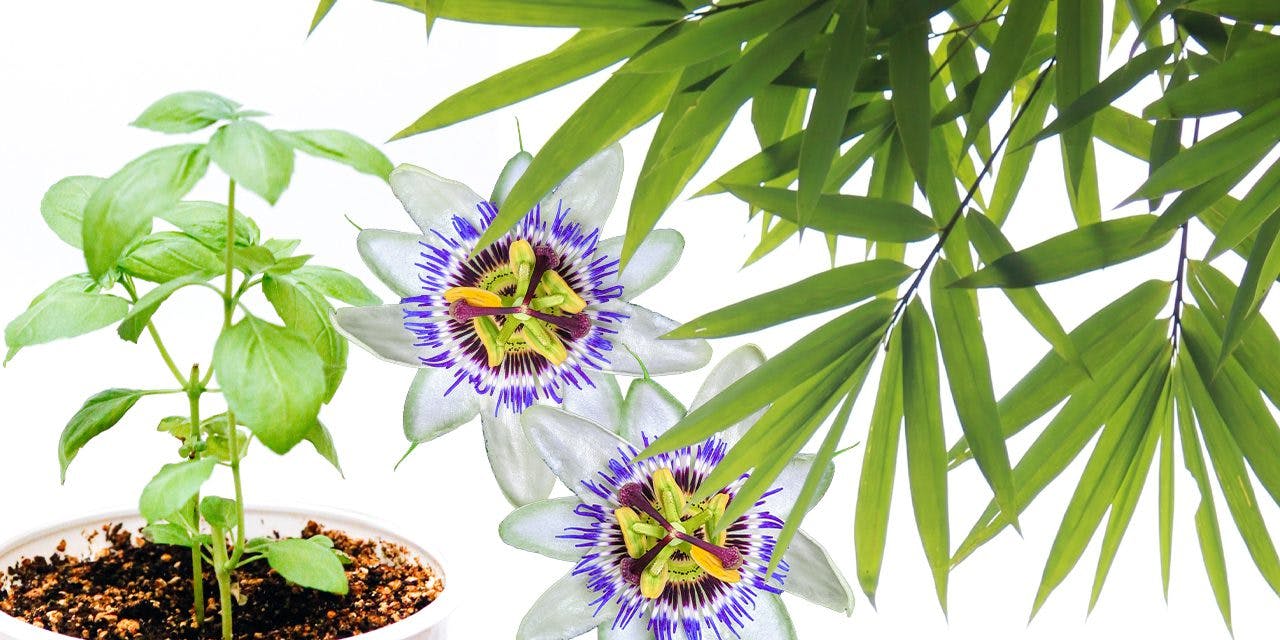What Is Orientin? Everything to Know About the Flavonoid

Article written by

Shanti RyleContent Writer
Content reviewed by

Dr. Lewis JasseyMedical Director - Pediatric Medicine
Cannabis is a wonderfully complex plan with hundreds of compounds, including cannabinoids, terpenes, and the relatively lesser-known suite of flavonoids that give plants their flavor and color. Today, we explore one of the more prevalent flavonoids in cannabis: orientin.
Orientin is a flavonoid with a sharp, bitter taste, commonly found in the cannabis plant and tea plants like rooibos. Orientin features potent antioxidant properties, with antibiotic, anti-inflammatory, and anti-cancer potential.
Get your medical marijuana card
Connect with a licensed physician online in minutes.
What Is Orientin?
Orientin is an active, water-soluble flavonoid found in cannabis and other plants. It is one of the thousands of molecules that play a role in our sensory experience of cannabis. Orientin has been isolated from various plants in nature, including bamboo leaves, basil, passion flowers, Tulsi, and Bellyache Bush.
Orientin is described as having a sharp and bitter flavor, like that of darker herbal teas. While orientin doesn’t have as strong of pigmentation as other flavonoids, it does add a slight brown color to the plants in which it’s present.
How Orientin Works in Cannabis
In concert with terpenes, flavonoids give cannabis its unique character and distinguishing qualities from strain to strain. Smell and taste are closely interrelated, and terpenes and flavonoid profiles work together to set different cannabis strains/cultivars apart from each other.
Flavonoids are also responsible for the pigmentation of the cannabis plant, just as they work in other flowers and plants. Orientin and other flavonoids found in particular strains give cannabis its unique pigmentation, with hints of reds, oranges, yellows, and purples.
While flavonoids are vastly under-researched, they are thought to have similar synergistic abilities with other molecules found in cannabis, working together in what’s called the “Entourage Effect.” We have a much closer understanding of how terpenes and cannabinoids interact to produce cultivar-specific effects, and flavonoids likely play a further role in how a particular strain/cultivar interacts with our unique endocannabinoid systems.
More research is needed to understand if or how flavonoids enhance or modulate the efficacy of cannabinoids, terpenes, and other flavonoids. However, we can safely assume that flavonoids feature important properties that provide optimal results when used in medical cannabis.
Health Benefits and Uses
Studied on its own, research has discovered promising medicinal uses for orientin.
Plentiful research has discovered that orientin features powerful antioxidant and anti-aging properties, thanks to its electron affinity on free radicals and ability to reduce oxidative stress in both in vitro and animal studies.
Orientin also has noticeable antiviral and antibacterial benefits, which point to a promising potential in future antibiotic creation. Orientin individually showed moderate to potent antiviral activity, while a mixture of orientin and other flavonoids inhibited a Herpes virus type.
The flavonoid also features promising anti-inflammatory capabilities: studies found that orientin inhibited inflammatory responses in both cell and animal models. Orientin was also able to inhibit glucose-related inflammation, pointing to useful applications in treating diabetes.
Finally, orientin shows potential in boosting heart health and protecting individuals from risk factors for congestive heart failure. Orientin was found in both cellular and animal studies to have a protective vasodilatation ability in vascular pathways and reduce heart cell death in rats with difficulty circulating blood oxygen levels.
Get Your Medical Card
Connect with a licensed physician online in minutes.
Frequently Asked Questions
What is orientin used for?
Orientin is found in many plant medicines stretching back thousands of years in history. Bamboo leaves containing orientin have been used for thousands of years in China for both crafting and medicinal use. Passion flower was historically used as a calming agent in Spain, while trollius was used in traditional Chinese medicine to treat respiratory infections and bronchitis.
What is orientin found in?
Orientin is found in cannabis and other plants in nature, such as bamboo leaves, basil, passion flower, Tulsi, and Bellyache Bush, among others.
Is orientin beneficial for health?
While research studying orientin in cannabis is lacking, plentiful studies support orietin’s usefulness in antioxidative, anti-aging, antiviral/antibacterial, anti-inflammatory, and heart-protective remedies.



